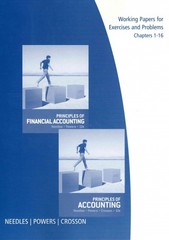Question
Briefly explain the general purpose of each of the three financial statements (the income statement, the balance sheet and the cash flow statement) and the
Briefly explain the general purpose ofeachof the three financial statements (the income statement, the balance sheet and the cash flow statement)andthe usefulness ofeachof them for the owners of Cutting Edge Ltd.
reference:
case study for cutting edge.
Becky and Dan established a hairdressing company together in 2010, Cutting Edge LTD Ltd. At first, they had one salon but over time they have opened six more, two of which opened at the very end of 2019. In other words, the 2019 figures are for five branches, whereas those for 2020 are for seven branches. The salons, which are all roughly the same size, cater to both men and women. Their business model now is to rent out 'chairs', a system whereby self-employed hairdressers pay a monthly rent to use a chair in one of the salons. The rents are set annually in advance and should be paid monthly in arrears. Becky and Dan no longer style hair themselves but oversee the business. This involves the accounting and administration from their home-office, marketing and branch visits.
Additionally, they sell hair products in store. These are typically sold at a 150% mark up (that is, the sales price is two and half times the cost of purchase. For example, if a product cost Snip 10 then it would be sold at 10 + (10 x 1.5 = 15) = 25, or 10 x 2.5 = 25.). Hairdressers do not get a commission for making product sales, but those who sell more get reduced chair rents at the annual re-negotiation. Any receivables in the balance sheet relate to hairdressers' chair rents.
Although most of the hairdressers are self-employed, Becky and Dan take a salary. They also currently have twelve apprentices on their books, whom they help to train. The apprentices help the self-employed stylists and only receive a salary. The customers' payments go to the stylists. Hence the apprentices do not generate income for Snip Snip.
The Cutting Edge LTD chain has a reputation for high quality and a loyal customer base locally. This has been done through a combination of recommendations by satisfied customers and by marketing and advertising. However, they have noticed a drop in customers recently with a trend in some customers deciding to cut their own hair at home.
80% of the shares of the company are owned by Dan and Becky and the rest by Becky's mother, Susan. The shareholders have not been taking dividends out of the business in order to increase funds for investment by the company.
Over the past few years, the return on equity has been around 34%. Part-way during 2019 Snip increased their debt to 125,000 to help fund expansion.
Susan is concerned that the business is not realising its full potential as well as how to address the possibility of falling customer numbers. For example, she has read that more men are starting to cut their own hair at home. Susan wishes to understand more about the latest financial statements, any trends indicated by an analysis of the financial statements and any future plans as to how any concerns may be addressed. She is quite concerned that the cash flow statement was negative last year and not very positive this year.
income statement



Step by Step Solution
There are 3 Steps involved in it
Step: 1

Get Instant Access to Expert-Tailored Solutions
See step-by-step solutions with expert insights and AI powered tools for academic success
Step: 2

Step: 3

Ace Your Homework with AI
Get the answers you need in no time with our AI-driven, step-by-step assistance
Get Started


